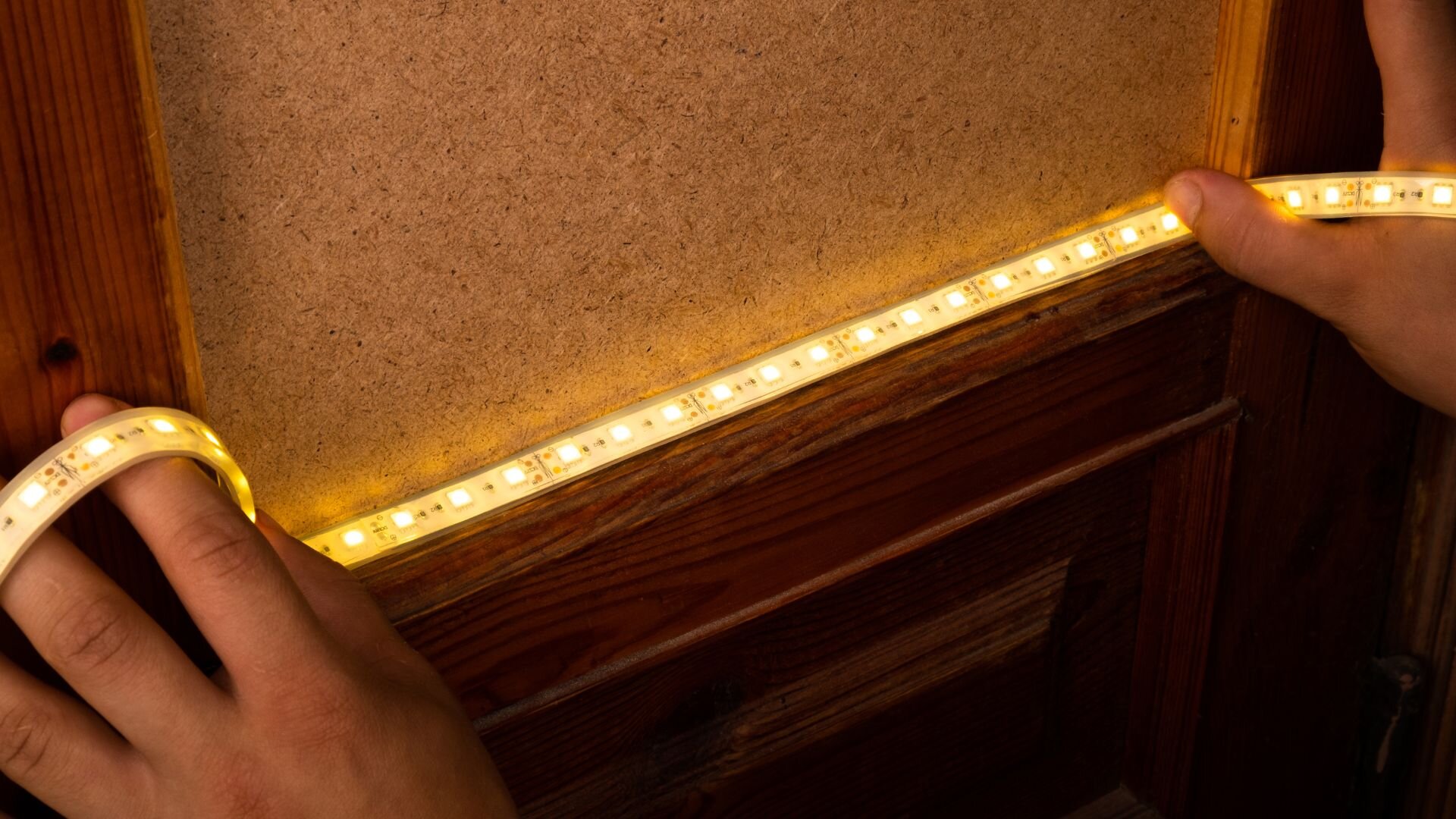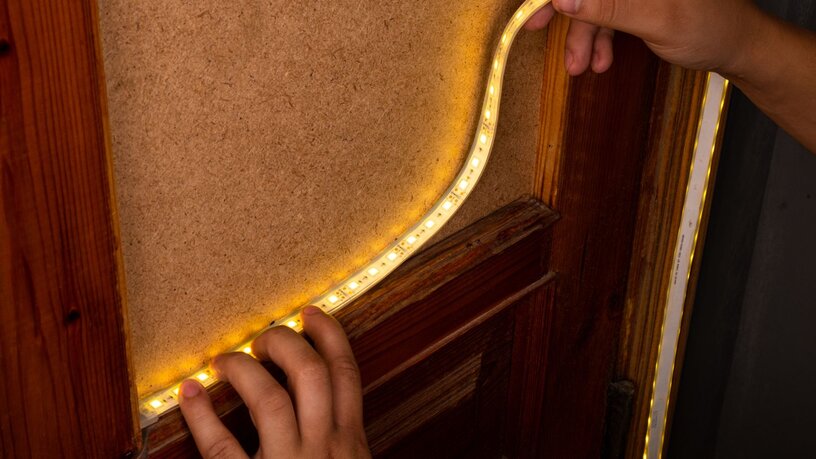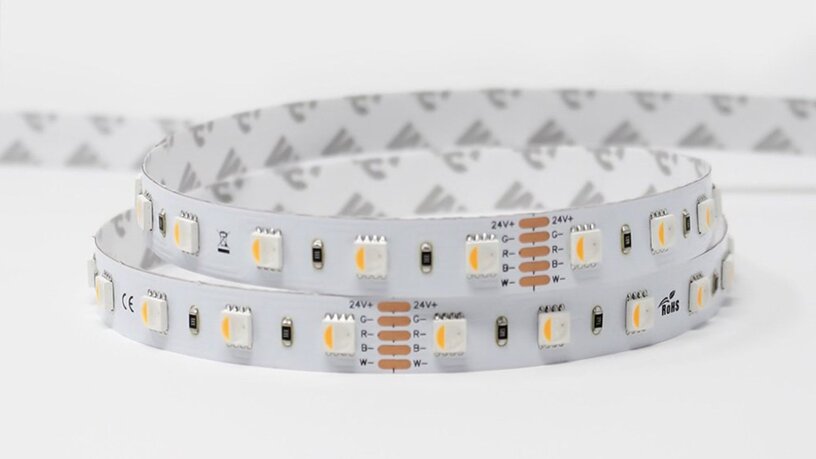Trade Members Get 10% Off. Sign Up Today

How To Prevent LED Lights From Flickering
LED flickering is a common issue in lighting installations, often caused by dimming incompatibilities, voltage fluctuations, or control system limitations. Identifying the cause is essential for achieving a stable, long-term performance for your LED project.
This guide breaks down the main causes of flickering, including TRIAC dimming (mains voltage) and PWM dimming (extra low voltage), and explains the best methods for achieving stable, flicker-free lighting.

Why LED Flickering Happens And Why It Matters
LED flickering occurs at different frequencies, measured in hertz (Hz), which indicates the number of cycles per second. For example, a flicker rate of 100 Hz means the light pulses 100 times per second.
LED flickering can manifest in two ways:
- Visible flicker (100 Hz or lower) – Detectable by the human eye.
- Invisible flicker (above 100 Hz) – Occurs at higher frequencies where it is not consciously perceived but may still affect performance.
Most people can detect flicker up to 100 Hz, though visibility depends on factors such as flicker intensity, brightness, background contrast, and peripheral vision sensitivity.
At frequencies above 100 Hz, flickering is less perceptible but can still impact visual comfort in environments requiring prolonged exposure, such as offices, retail spaces, and commercial settings.

Understanding LED Dimming Types
Before addressing flickering causes, it's important to understand the two main dimming types used in LED installations:
- Line Voltage (LV) Dimming: This occurs on the high-voltage input side (mains power) before the driver. The AC waveform is modified before it reaches the driver, which then interprets the altered signal to control brightness. Examples include TRIAC or Trailing Edge Dimming.
- Extra Low Voltage (ELV) Dimming: This takes place on the low-voltage (DC) side after the LED driver. The driver remains powered at all times while a control module adjusts brightness by regulating the DC output. Example: Pulse Width Modulation (PWM).

Why Do My LED Lights Flicker?
A flickering LED usually indicates incompatibility between the dimmer and LED driver, an unstable power supply, or voltage regulation issues.
A common cause of flickering is PWM dimming with an output frequency that is too low. If the modulation frequency is too low, the LEDs rapidly switch on and off, resulting in visible flicker. Additionally, PWM dimming can interfere with the integrated circuit (IC) that controls current within each section of an LED tape, potentially causing irregular operation and flickering.
Leading-edge and trailing-edge dimming technologies can also cause flickering if not correctly paired with a compatible LED driver.
For example, TRIAC-based dimmers may cause flickering in LEDs if the power draw falls below the TRIAC’s minimum load. When the TRIAC fires, a sudden voltage spike can cause ringing — an oscillation in the circuit.
If the current drops below the trigger threshold during this ringing, the TRIAC may re-fire erratically, leading to flickering and buzzing.
Additionally, long-run LED tape installations are more prone to flickering at the furthest points from the power supply due to voltage drop over extended distances. This occurs when the electrical resistance of the strip causes a gradual decline in voltage, leading to dimming and instability.
In environments requiring stable lighting — such as museums, galleries, and high-end retail displays—flickering can disrupt the visual experience and impact product presentation.

Common Causes Of LED Flickering
Several factors contribute to flickering in LED strip lights when dimmed. Below are the most common causes:
PWM dimming issues
PWM (Pulse Width Modulation) is a common technique used to dim LEDs by rapidly switching them on and off at high speeds. The LED pulses so quickly that individual flashes aren't visible, and the eye perceives a steady, dimmed output.
The brightness is controlled by adjusting the duty cycle — the proportion of time the LED is on during each cycle.
- If the PWM frequency is too low, visible flickering can occur.
- The mark-space ratio also plays a role—when it falls below 10%, flicker may become noticeable even at higher frequencies.
- Increasing the PWM frequency above 300 Hz can help reduce this effect.
PWM dimming occurs on the extra low voltage (ELV) side, meaning the LED driver remains continuously powered.
Flickering in PWM-controlled LEDs is usually caused by an insufficiently high modulation frequency or unstable control signals — not the driver turning on and off.

Overloaded Drivers
LED drivers have specific load capacities depending on whether they regulate voltage or current. Exceeding the driver’s load capacity — whether by connecting too many fixtures, using high-power LEDs, or experiencing voltage loss over long runs — can compromise performance and reliability.
When a constant voltage driver or constant current driver overloads, it can cause excessive heat to build up, triggering thermal protection mode. If this happens repeatedly, the driver may cycle between shutdown and restart, causing LEDs to flash.

Loose Or Faulty Wiring
Loose or faulty wiring is an issue that professionals all over will have experienced at some point. While LED systems operate at low voltage, loose connections are primarily a safety concern rather than a flickering issue.
The main risk with loose terminals, degraded cables, poor solder joints, and damaged connectors is arcing, which generates heat and can create fire hazards.
If flickering does occur alongside connection problems, it should be investigated immediately as it may indicate more serious electrical issues - especially in places like commercial installations where there is a lot of footfall, heat, humidity, and vibration.

Difference Between LV (TRIAC) And ELV (PWM) Dimming
Dimming methods vary depending on whether they operate on low voltage (LV) mains-side dimming or extra low voltage (ELV) post-driver dimming.
LV Dimming (TRIAC Dimming – Mains Voltage Side)
TRIAC dimmers operate on the mains voltage side before the driver. They adjust brightness by chopping the AC waveform, modifying the power input before it reaches the LED driver.
- Leading-edge TRIAC dimmers cut the front portion of the AC cycle. These were originally designed for incandescent lighting and can cause incompatibility issues with LED drivers, leading to flickering.
- Trailing-edge dimmers cut the end portion of the AC cycle and are generally better suited for LED systems.
- TRIAC-compatible LED drivers convert the chopped AC input into a PWM output, ensuring stable dimming. Using a non-compatible TRIAC dimmer with an LED driver can result in flickering, buzzing, or unstable brightness levels.
ELV Dimming (PWM Dimming – Low Voltage Side)
PWM dimming occurs after the driver, regulating brightness at the extra low voltage (ELV) DC side. The driver remains powered at all times, and a control module adjusts the LED output by modulating the PWM signal.
- Unlike TRIAC dimming, PWM does not modify the AC waveform—instead, it switches the LEDs on and off rapidly to achieve dimming.
- A PWM controller must operate at a high enough frequency (typically above 300 Hz) to prevent visible flickering.
- PWM dimming is often used in applications requiring smooth, stable dimming, such as architectural lighting or display lighting.

How To Stop LED Lights From Flickering When Used With A Dimmer
To stop LED lights from flickering when used with a dimmer, identify the dimming system in use and check for compatibility or performance issues.
Set PWM Frequency Above 300Hz
For PWM dimming, ensure the frequency is above 300Hz to avoid visible flickering from rapid on-off cycling. Some dimmers, like our Inline Dimmer, allow adjustable PWM frequency settings to help prevent flicker.
Match LED Drivers To Dimming Type
For leading-edge or trailing-edge dimming, use an LED driver that matches the dimming technology. Using the wrong type can cause flickering and instability.
Use LED-Compatible TRIAC Dimmers
For TRIAC dimmers, choose LED-specific models and drivers designed for TRIAC dimming. Standard dimmers made for incandescent lights may not regulate power correctly, leading to flickering or unstable brightness.
Select The Right Driver Wattage And Voltage
Choose a driver with a wattage capacity at least 10% higher than the LEDs' required wattage to extend lifespan and prevent overloads. Ensure the driver’s output voltage (12V, 24V, 36V, or 48V) matches the LED system to avoid flickering or damage.
Check Wiring And Connections
Ensure all wiring is secure, insulated, and undamaged. Loose or faulty connections can lead to flickering and long-term reliability issues.

A Step-By-Step Guide To Troubleshooting LED Flickering
When dealing with LED flickering, a systematic approach to troubleshooting can help quickly identify the source of the problem.
Identify The Patterns And Triggers
Notice when the flickering happens - does it occur at certain dimming levels, after a certain time period, or when other equipment turns on?
Narrow Down The Issue
Test each fixture individually with a stable power source. If one light flickers while others don’t, that component may be the culprit. Swap in a different power supply or dimmer to see if that stops the flickering - this can also help narrow down whether the problem is with the dimming system or the power supply.
Check The Connections
Perform a thorough inspection of the wiring. Check over all connection points and look for signs of wear and tear or loose fittings. Tighten any loose connections and replace any damaged or corroded wiring.

Choosing The Right LED Products To Prevent Flickering
To avoid flickering from the off, it’s worthwhile spending some time researching the right products. Here are a few things to keep in mind:
- To answer the question “Why do my LED lights flicker on a dimmer?” it’s important to make sure that the LED driver is compatible with the dimmer. LED systems usually need either constant voltage or constant current drivers, each suited to different applications.
- Matching the right driver with the right dimmer (leading edge or trailing edge) will make sure lights dim smoothly and prevent flickering, helping any installation run reliably.
- Choose LED drivers with a high PWM frequency (above 300hz) to eliminate visible flicker.
- Ensure the driver is designed specifically for TRIAC dimming if used for TRIAC dimming.
Our range of long-run LED strip lights features smooth, flicker-free dimming, with compatibility across various control protocols and drivers.
Explore our full range today for high-quality, flicker-free lighting products. Get in touch with us today for more expert guidance.
Get in touch with Ultra LEDs today
Decided what you need for your LED installation? Ultra LEDs offers a full range of solutions, including drivers, dimmers, strip lights, and Neon Flex — ensuring stable, flicker-free lighting for any project.





